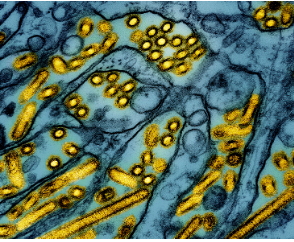The first suspected human case of avian influenza in Canada has left a teenager in serious condition at a children’s hospital in British Columbia.
At a press briefing on Tuesday, provincial health officer Bonnie Henry stated, “This teen was healthy before this, so there were no underlying conditions.”
“It simply serves as a reminder that this virus can spread and cause serious illness in young people, and the deterioration I described was fairly quick.”
Health authorities in British Columbia said on Saturday that they had identified the country’s first human case of H5 bird flu in a teenager.
According to Henry, the province believes the case is H5N1, but they are still determining the precise strain.

Since there is no proof that H5N1 may spread to humans, the World Health Organization states that there is no risk to humans. However, the virus has been discovered in an increasing number of animals, especially cattle, in the US.
Henry refused to reveal the teen’s age or gender, but he did say that they had been brought to the hospital on November 8 after testing on November 2 after they had started exhibiting symptoms. Conjunctivitis, fever, and coughing were among the symptoms.
According to her, they were admitted to the hospital on Tuesday due to acute respiratory distress syndrome.
According to Henry, the teenager had been around dogs, cats, and reptiles but had no agricultural experience. The source of the infection had not been found. “There is definitely an ongoing investigation into that.”
Since March, bird flu has spread to around 450 dairy farms across 15 U.S. states, and since April, the CDC has reported 46 human instances of the disease.
Many wild birds have tested positive, and British Columbia has identified at least 26 impacted locations around the province, Henry said on Tuesday.
There have been no reports of avian flu in milk samples or cases in dairy animals in Canada.

Dr. Amesh Adalja, an infectious disease specialist at the Johns Hopkins Center for Health Security, wrote in an email that while cases involving this subtype have generally been mild, “H5N1 has historically been able to cause critical and fatal illness.” He also added that it will be necessary to confirm that it is, in fact, H5N1 and which subtype.





